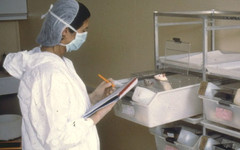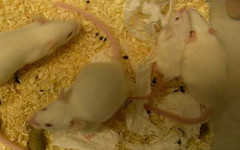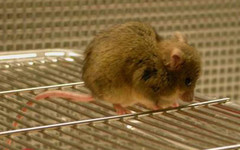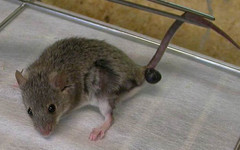Observation
Observing and monitoring the welfare of each individual animal in the course of the experiment requires routine daily check-ups and an adequate assessment of all aspects of well-being, and a recording system.
Of particular importance are the critical phases in the experiment during which the animal’s welfare may be threatened. Ideally, these critical phases should have been identified at the start of the investigation. Conducting a pilot study may be helpful. Animals that can be expected to deteriorate, should be examined more frequently and more carefully. This check can consist of undisturbed observation (see movie 1 and next paragraph), handling, body condition scoring, response to external stimuli, blood and urine assays, weighing, and special registration methods, but also by visual inspection of the environment. Score sheets can be used to record the findings.
Undisturbed observation
Undisturbed observation means that animals are observed from a distance with the least possible disruption. Ideally, a camera is set up in the animal room and the images are viewed in another location. This is not always feasible. In that case, the observer should enter the animal room as quietly as possible and wait a while, before starting the observation (see movie 1).
Aspects to be evaluated
- Activity: Healthy mice and rats are active but they also have rest periods which become more frequent as the animal gets older. Mice and rats are nocturnal animals and their active phase is during hours of darkness. Aberrant behaviour will occur earlier and be more pronounced during the active phase. It is recommended to observe the animals in the dark if the active phase is relevant for the experiment. This can be done using infra red light.
- Social interactions: Are these normal (e.g. playing, determining dominance, sleeping) or abnormal (e.g. fighting, isolation from the group, barbering)? vocalisation (making sounds) is another aspect of rodent interaction.
- Alertness: An alert animal explores and evaluates its environment by behaviours such as rearing up and sniffing.
- grooming: A healthy animal pays frequent attention to the care of its body.
- Abnormal behaviour such as restlessness, circling (see movie 2), bizarre fighting, stereotypic behaviour (see movie 3), lethargy, vocalization (see movie 4).
- Abnormal physical appearance: The occurrence of malformations or abnormal development e.g. hydrocephalus (see picture), tumor (see picture), growth retardation (see picture).
Undisturbed observation should also include observation of the environment, e.g. the cage and bedding, for abnormal findings (e.g. feces, blood, etc.).
Prevent anthropomorphic projection
The ability to recognize reduced well-being is strongly dependent on the knowledge and experience of the observer and should be devoid of any anthropomorphic projection. Since rats and mice are natural prey animals, they are known to suppress behaviour that signals pain and disease, to reduce the chance of predation.








